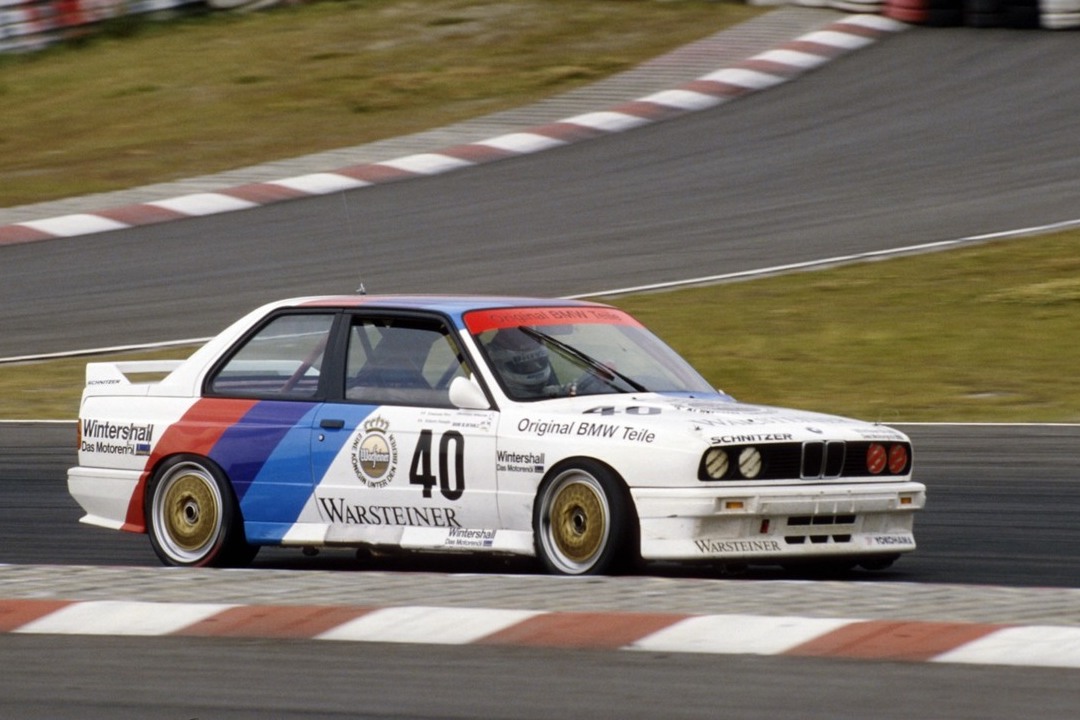When it comes to the world of motorsport, BMW has always been a name that commands respect. The German automaker has not only built cars that are synonymous with luxury and performance but also dominated the racing circuit with sheer brilliance. From endurance racing to Formula 1 and touring cars, BMW's legacy is nothing short of legendary. But what exactly makes their motorsport cars so successful? Let's dive into the thrilling world of BMW's racing history and uncover the secrets behind their triumphs.
BMW’s journey in motorsport started way back in the 1930s, but it wasn’t until the late 1960s that they truly began making waves. The brand has always been about pushing boundaries and innovating, which is why their racing cars have consistently set new standards in performance and engineering. Whether you're a die-hard fan of motorsport or just someone who appreciates great engineering, BMW’s racing legacy is something worth exploring.
So, buckle up as we take a deep dive into the most successful motorsport cars BMW has ever produced. This isn’t just about numbers and trophies; it’s about the passion, dedication, and sheer brilliance that went into creating these machines. Trust me, you’re in for a ride!
Read also:Unveiling Patricia Ann Vincent The Story Behind The Name
Table of Contents
- Introduction to BMW's Motorsport Legacy
- The BMW 328: A Classic That Started It All
- The BMW M1: The First Super Sports Car
- The BMW M3: Touring Car Dominance
- The BMW V12 LM: Le Mans Glory
- The BMW Z4 GT3: Modern-Day Racing Beast
- Technological Advancements in BMW Motorsport
- The Impact of Drivers on BMW's Success
- BMW's Future in Motorsport
- Conclusion: Why BMW's Motorsport Legacy Matters
Introduction to BMW's Motorsport Legacy
BMW’s motorsport journey is one filled with highs, lows, and everything in between. But one thing is certain: they’ve always managed to leave their mark on the racing world. Their success can be attributed to a combination of factors, including cutting-edge technology, exceptional engineering, and a team of talented drivers who bring these machines to life.
Over the years, BMW has competed in various racing categories, from touring cars to endurance racing and even Formula 1. Each category has its own set of challenges, and BMW has risen to the occasion every single time. This section will give you a broad overview of BMW’s motorsport history and set the stage for the specific cars we’ll be discussing later.
But before we get into the nitty-gritty, let’s talk about what makes BMW’s motorsport cars so special. It’s not just about speed; it’s about precision, reliability, and a relentless pursuit of excellence. These are the values that have driven BMW to the top of the podium time and time again.
The BMW 328: A Classic That Started It All
Historical Background
The BMW 328 is often regarded as the car that started it all for BMW in motorsport. Introduced in 1936, this roadster was a masterpiece of engineering for its time. With its lightweight construction and powerful inline-six engine, the 328 quickly became a favorite among racing enthusiasts.
Some key stats? The 328 produced around 80 horsepower, which might not sound like much today, but back in the day, it was enough to make heads turn. The car’s aerodynamic design and advanced suspension system made it a formidable opponent on the track.
Notable Achievements
One of the most notable achievements of the BMW 328 was its victory at the 1936 Mille Miglia. This grueling endurance race tested the limits of both man and machine, and the 328 emerged victorious. It was a moment that solidified BMW’s place in the racing world and set the tone for future successes.
Read also:Patreon Leaks The Untold Story Behind The Curtain
- 1936 Mille Miglia Winner
- Multiple Class Wins in Various European Races
But the 328 wasn’t just a one-hit wonder. It continued to dominate races throughout the late 1930s, proving that BMW had what it took to compete at the highest levels.
The BMW M1: The First Super Sports Car
The Birth of a Legend
Fast forward to the 1970s, and BMW introduced the M1, their first-ever super sports car. Designed in collaboration with Italian coachbuilder Italdesign, the M1 was a bold statement from BMW. It wasn’t just a road car; it was a racing machine that could hold its own on the track.
Under the hood, the M1 packed a 3.5-liter straight-six engine that produced 277 horsepower. This was a beast of a car, capable of reaching speeds of over 160 mph. And let’s not forget the stunning design, which was both aggressive and elegant at the same time.
Racing Success
The M1 found its true calling in the world of racing, particularly in the Procar Series, which was held in conjunction with Formula 1 races. Drivers like Nelson Piquet and Niki Lauda piloted the M1 to numerous victories, showcasing its capabilities on the world stage.
- Winner of the 1979 European Procar Series
- Multiple Class Wins in Endurance Racing
The M1 proved that BMW could build cars that were not only fast but also reliable and capable of winning under the most demanding conditions.
The BMW M3: Touring Car Dominance
Evolution of a Champion
When people talk about BMW’s motorsport success, the M3 is often the first car that comes to mind. Introduced in 1986, the M3 quickly became a dominant force in touring car racing. Over the years, the M3 has undergone several iterations, each one more powerful and advanced than the last.
The original M3 was powered by a 2.3-liter four-cylinder engine that produced 200 horsepower. While this might not seem like much by today’s standards, it was more than enough to dominate the competition. The car’s lightweight construction and advanced aerodynamics made it a force to be reckoned with on the track.
Notable Victories
The M3’s success in touring car racing is nothing short of remarkable. From the British Touring Car Championship to the German Touring Car Masters (DTM), the M3 has claimed countless titles and victories. Some of the most notable achievements include:
- Winner of the 1987 European Touring Car Championship
- Multiple Class Wins in the British Touring Car Championship
- Success in the DTM Series
What sets the M3 apart is its ability to adapt to different racing categories while maintaining its dominance. Whether it’s on an oval track or a street circuit, the M3 is always a strong contender.
The BMW V12 LM: Le Mans Glory
A Leap into Endurance Racing
In 1999, BMW returned to the world of endurance racing with the V12 LM, a car specifically designed to compete in the prestigious 24 Hours of Le Mans. This was a bold move, as Le Mans is one of the toughest races in the world, testing both the car’s reliability and the driver’s endurance.
The V12 LM was powered by a 6.0-liter V12 engine that produced around 600 horsepower. This was a massive engine for a race car, and it gave the V12 LM the power needed to compete with the best in the business.
Victory at Le Mans
The V12 LM’s crowning achievement came in 1999 when it won the 24 Hours of Le Mans. This victory was a testament to BMW’s engineering prowess and their ability to build cars that could withstand the rigors of endurance racing. The win also marked BMW’s return to the top of the podium in international racing.
- 1999 24 Hours of Le Mans Winner
- Multiple Class Wins in Various Endurance Races
The V12 LM’s success at Le Mans proved that BMW could compete with the best in the world, even in the most demanding racing environments.
The BMW Z4 GT3: Modern-Day Racing Beast
Design and Development
Fast forward to the 2010s, and BMW introduced the Z4 GT3, a car designed to compete in the GT3 category. The Z4 GT3 was built around the same principles that have made BMW successful in motorsport: precision, reliability, and performance.
Under the hood, the Z4 GT3 features a 4.4-liter V8 engine that produces around 500 horsepower. This car is a true modern-day racing beast, capable of competing at the highest levels of GT racing.
Recent Successes
The Z4 GT3 has enjoyed considerable success in recent years, claiming victories in various GT3 championships around the world. Some of the most notable achievements include:
- Winner of the 2012 24 Hours of Spa-Francorchamps
- Multiple Class Wins in the Blancpain GT Series
The Z4 GT3’s success is a testament to BMW’s continued commitment to motorsport and their ability to adapt to changing regulations and technologies.
Technological Advancements in BMW Motorsport
One of the reasons BMW has been so successful in motorsport is their commitment to technological advancements. From aerodynamics to engine design, BMW has always been at the forefront of innovation in the racing world.
For example, the use of lightweight materials like carbon fiber and aluminum has allowed BMW to build cars that are both strong and nimble. Additionally, advancements in engine technology have enabled BMW to produce engines that are not only powerful but also efficient and reliable.
The Impact of Drivers on BMW's Success
While the cars themselves are undoubtedly impressive, it’s the drivers who bring them to life. Over the years, BMW has worked with some of the best drivers in the world, and their skill and dedication have played a crucial role in BMW’s success.
Drivers like Nelson Piquet, Niki Lauda, and Jenson Button have all contributed to BMW’s racing legacy. Their ability to push the cars to their limits and make split-second decisions has been instrumental in securing victories on the track.
BMW's Future in Motorsport
Looking ahead, BMW shows no signs of slowing down in the world of motorsport. With advancements in electric and hybrid technology, BMW is poised to continue their dominance in the racing world. The introduction of electric racing series like Formula E presents new opportunities for BMW to showcase their engineering expertise.
Additionally, BMW’s commitment to sustainability means they are likely to focus on developing cars that are not only fast but also environmentally friendly. This is a trend that is likely to continue as the racing world becomes more focused on sustainability.
Conclusion: Why BMW's Motorsport Legacy Matters
In conclusion, BMW’s success in motorsport is a testament to their dedication to excellence, innovation, and passion for racing. From the classic BMW 328 to the modern-day Z4 GT3, each car has played a crucial role in shaping BMW’s racing legacy.
As we’ve seen, BMW’s success is not just about the cars; it’s about the people behind them. From engineers to drivers, everyone involved in BMW’s motorsport program has contributed to their success in one way or another.
So, what can you do next? If you’re a fan of BMW or motorsport in general, why not share this article with your friends? Or better yet, leave a comment and let us know which BMW racing car is your favorite. Who knows, maybe you’ll inspire the next generation of BMW fans!


